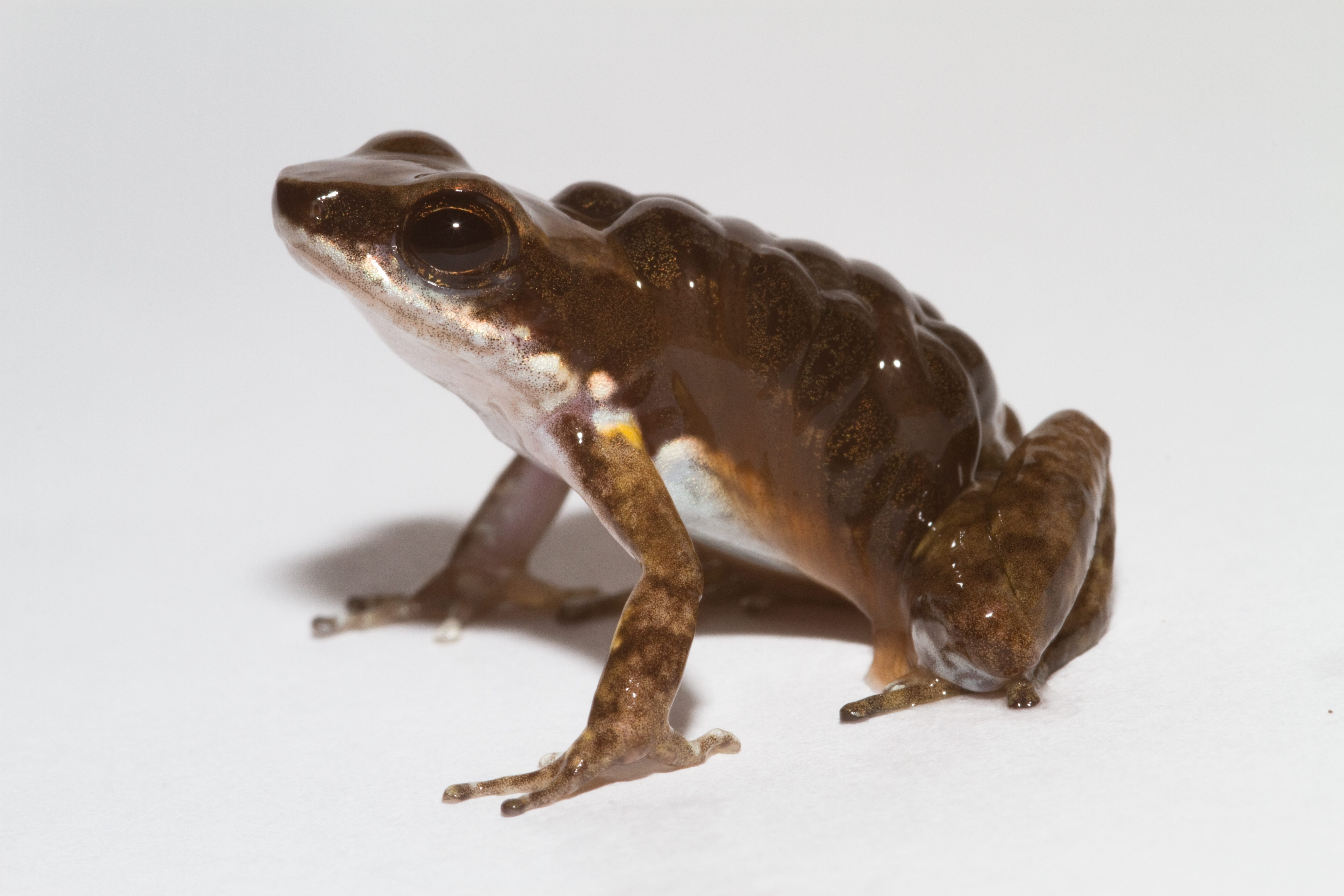
Researcher Denise Küng is using emerald glass frogs and rocket frogs (shown here with tadpoles) in Panama to see if she can develop a treatment for chytrid. (Photo by Brian Gratwicke, Panama Amphibian Rescue and Conservation Project)
What comes to your mind when you think about bacteria? They are generally feared as disease agents among humans, but they do much more than cause infections. It seems like mutualistic microbial communities are common in invertebrates as well as vertebrates. Humans, with more than 600 types of bacteria residing only in their mouth, are no exception. Several cooperating bacteria can develop biofilms and create a matrix of living cells and bacterial products, and the community structure of microbes on a host could be connected with resistance to disease. Let’s say a bacterial community is disturbed by antibiotics and its competitiveness is thus reduced, then pathogens can exploit this and establish themselves in a host.
The skin of amphibians is host to a diverse microbiota. They live in damp or aquatic habitats which are potentially pathogen-rich environments. As protection against infections, amphibians developed skin defenses, such as antimicrobial peptides secreted by glands in their skin and microbial communities with antimicrobial activity. By doing bacteria removal and additional experiments, scientists found evidence for enhanced or decreased amphibian health depending on alterations of the microbial community structure on the skin. In some amphibian species, antimicrobial peptides seem to provide protection from infectious diseases such as the fungus Batrachochytrium dendrobatidis and may help to prevent population declines.

Denise hopes to find a treatment for frogs in nature so they can safely coexist with chytrid. (Photo by Brian Gratwicke, Panama Amphibian Rescue and Conservation Project)
To find out more about the bacterial communities and antimicrobial peptides on the skin of amphibians, I’m currently in Panama working with the Panamanian rocket frog, Colostethus panamensis, and emerald glass frog, Centrolene prosoblepon. I’m going to look at their skin microbiota and how it changes after several weeks living in captivity. Will it stay the same or are some members of the bacterial community getting lost?
By giving some of the rocket frogs a bath in a solution with bacteria, I’m trying to increase the density of a particular bacterium on their skin. This bacterium has been shown to decrease the growth of the chytrid fungus Batrachochytrium dendrobatidis in the lab. If it’s possible to amplify its density on amphibian skin over a long period of time, this might be a possible treatment for frogs in nature to allow them to coexist with the pathogen in infected environments.
The emerald glass frogs seem to be able to survive in environments infected with Batrachochytrium dendrobatidis. They must have found a form of protection from the fungus on their skin. I am taking a closer look at the antimicrobial peptides on their skin. I also bathed them in water every day for a week and then used their skin washes to treat another group of the rocket frogs with the hope that whatever protects the glass frogs from the fungus will go in the water and from there onto the skin of the rocket frogs. Analyzing the skin swabs of the frogs in the lab will show whether this treatment changed the rocket frog skin microbiota, antimicrobial petides or both.
—Denise Küng, University of Zurich
